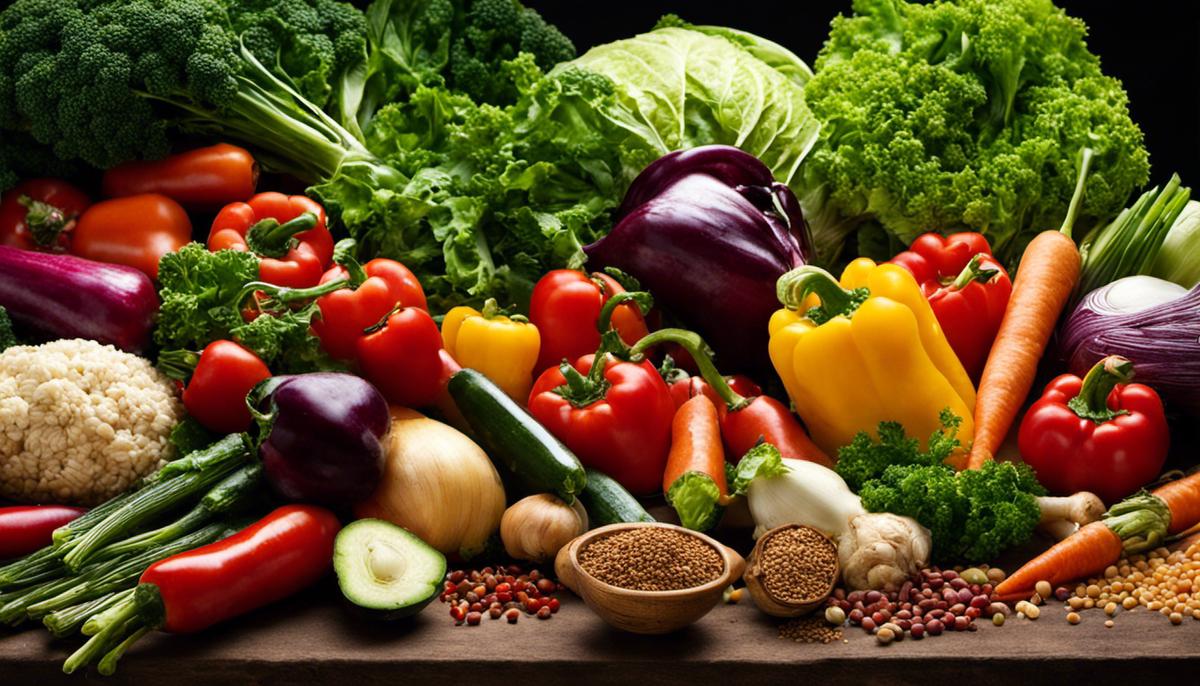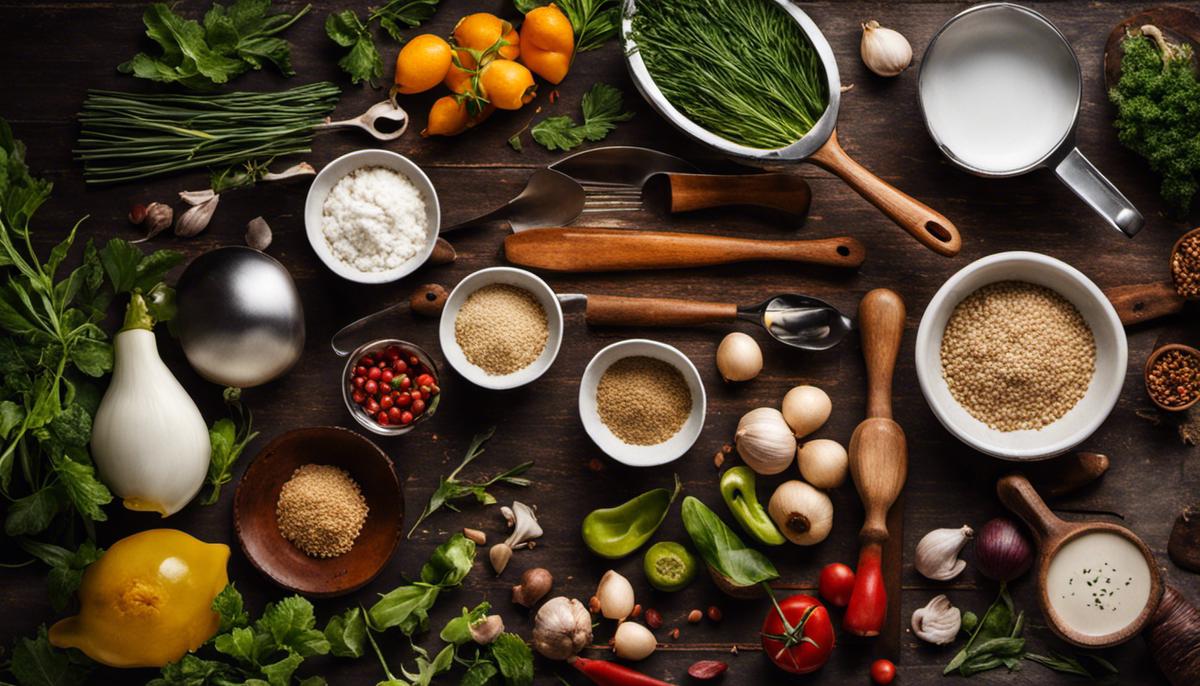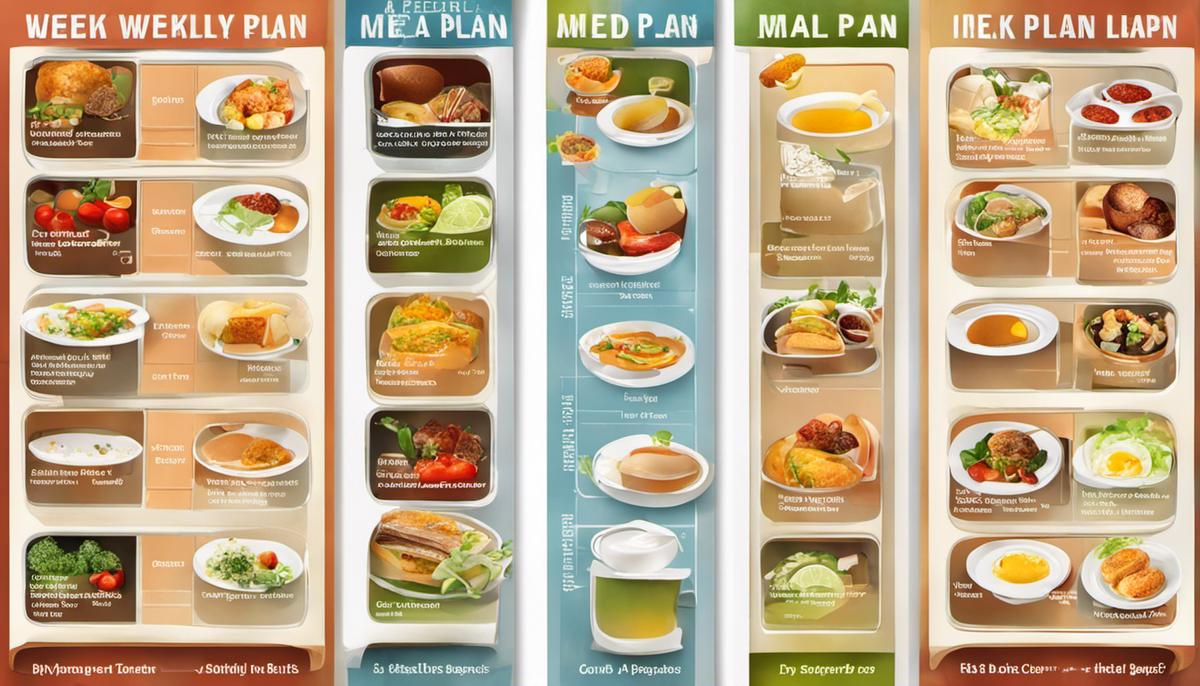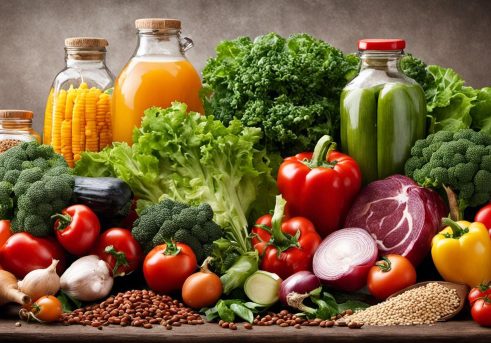With the busy pace of modern life, finding time to cook nutritious and appetizing meals can often feel like a daunting task. Balancing the rush of daily schedules while ensuring a healthy diet requires knowledge and planning. This discourse seeks to demystify the process of creating quick and healthy dinner recipes. We will delve deep into identifying wholesome ingredients, their nutritional benefits and how they can be incorporated into daily meals. We will equip ourselves with an arsenal of basic yet versatile cooking techniques, which not only aid in meal preparation but also in preserving the nutrient content of our ingredients. Finally, we’ll explore the art of crafting a weekly meal plan embedded with these nutritional powerhouses and cooking techniques to add variety and balance to your dinner table.
Identifying Healthy Ingredients
Harness the Power of Healthy Ingredients for Quick Dinner Recipes
In the flourishing world of culinary artistry, there is an enticing universe of ingredients waiting to be discovered. Amidst this vast cosmos is an invigorating array of healthy components that ensure meals are not only gastronomically delightful but nutritionally enriching as well. For a time-strapped food lover seeking to combine health, taste, and speed, here are some common healthy ingredients ideal for quick dinner recipes.
Legumes are a treasure trove of nutrients including protein, fiber, iron, and B vitamins. They can be quickly transformed into hearty meals, making them a worthy addition to the quick-dinner arsenal. Whether it’s a chickpea curry, black bean stew, or lentil spaghetti Bolognese, legumes deliver health, speed, and satisfaction in a flash.
Quinoa, a superhero in the realm of grains, packs in proteins, fiber, and all nine essential amino acids. This champion ingredient cooks fast and provides a delightful, nutty foundation when dolled up with fresh veggies, lean proteins, and a spicy sauce.
Sweet potatoes are, without a doubt, a standout in the root vegetable kingdom. Bake, mash, or spiralize them; their high-fiber, vitamin C-rich profile modifies any regular dish into a healthy signature meal.
Another crown jewel, spinach, is a leafy green loved for its beneficial bundle of vitamins A, C, K, and folate. It wilts quickly making it a wonderful last-minute enhancement to soups, pastas, and sautés.
Healthy fats such as avocados, olives, and coconut should not be overlooked in the quick-dinner playbook. Their heart-friendly fats enhance satiety while rounding out the flavor profile of a dish. Avocado smashed onto whole grain toast, coconut curry, or olives tossed into a salad are just a few delicious short-on-time options.
To enliven these ingredients, herbs and spices like garlic, turmeric, and cayenne pepper inject a delectable power punch. They not only raise the flavor game but usher in a host of wellness-benefits, from anti-inflammatory to antioxidant properties.
With this array of quick-cooking, nutrient-rich ingredients at our disposal, everyone has the potential to whip up a sumptuous, swift, and healthful dinner. It’s a fantastic opportunity to retreat from the day’s rush and indulge in a satisfying bite, infused with good health and wholesome flavor.

Learning Basic Cooking Techniques
Basic Cooking Techniques for Swift and Wholesome Dinners
The world of culinary arts is a vast space brimming with technique and flavor. Whether one is riffing on a classic favorite or experimenting with an exotic recipe, there are tried and true cooking techniques that elevate the flavor profile while ensuring nutritious meals. These health-conscious methods help to maintain the integrity of the ingredients, offering a quick and healthy dinner without compromising the taste and gastronomical satisfaction.
First on the list is steaming. This simple yet underappreciated method is gentle on the food, retaining its nutrients while keeping the flavor intact. Look beyond the stereotypical steamed vegetables, and instead, try it with fish or tofu. Wonderful flavors can be enhanced with a dash of sea salt, pepper, and a scant scattering of fresh herbs.
Next, there’s grilling. Unleashing the robust, smoky flavors while preserving the nutritional components, grilling enhances the natural flavors of food. For the best outcome, stick to lean meat and colorful vegetables, drizzled with just a touch of olive oil for gleaming perfection. Remember to keep additives minimal, allowing the ingrained flavors to shine through.
The use of a slow cooker is another heartwarming method. Ever mysterious, slow cooking allows your dish to develop a depth of flavor while breaking down the fibrous structure of some ingredients, making it a phenomenal choice for lean, tougher cuts of meat or root vegetables. But remember, patience is the key!
Moving into the realm of lesser-known techniques for the home cook, poaching brings a deluge of flavor, tenderness, and succulence. A technique typically reserved for eggs, it can be applied to lean proteins and vegetables, infusing them with depth and aromatic indulgence. Make an exciting poached chicken salad, or perhaps a poach n’ glaze pear dessert to sweeten up your meals.
Acquainting oneself with stir-frying is a must for anyone in pursuit of quick, healthful dinners. High on the heat and low on the oil, it’s a fun, frenzied marriage of sizzling sound and vibrant colors. From ginger-infused shrimp to a riot of crunchy, crisp vegetables, stir-frying offers room for creativity and innovation without violating your health goals.
Finally, broiling is a godsend for crisp, caramelized outcomes without resorting to deep-frying. Using high heat from above, it is comparable to an upside-down grill. Try it with a fresh fillet of salmon brushed with a mustard glaze—and prepare for your taste buds to be tingling with delight!
Each approach encourages culinary exploration, emphasizing the profound connection between food and well-being. While it is as much an art as it is a science, the impromptu dance around the kitchen, embracing new techniques, celebrating explosive flavors, and sharing wholesome meals remains an infinite joy. Remember, variety is the spice in the kitchen, so whichever method you choose, always imbue each dish with love, creativity, and relish.

Creating the Meal Plan
Strategizing Your Weekly Menu For Quick And Nutritious Evening Meals
Any epicurean worth their tangy sea salt knows the importance of a well-planned meal – even more so when the quest is for a quick, healthy dinner every night. The key lies in preparing a weekly meal plan striking a balance between nutrition, flavor, and efficiency. When you’ve already covered delicious and nutritious items like legumes, quinoa, sweet potatoes, spinach, healthy fats, and a palette of herbs and spices, there’s a landscape of food varieties still left to explore. Dive past steaming, grilling, slow cooking, poaching, stir-frying, or broiling, because here comes the next level of your culinary journey.
- Batch Cooking: Invest in a decent stock pot or multi-cooker and embrace the concept of batch cooking. This method is ideal for grains (like brown rice or barley), lean proteins (chicken, turkey) and hearty soups. Store these foods in portion-sized containers for easy reheating and serving throughout the week.
- Lean Proteins: Incorporate lean proteins like fish, tempeh, and tofu in your meal plan. These options are not only packed with essential nutrients but can be prepared quickly with a variety of cooking methods. A quick pan-sear or a trip through the oven can yield a nutritious protein source for several meals.
- Roasting: Still within the realm of low-fat cooking methods, consider the almighty roast. Roasting vegetables exudes their natural sweetness while preserving nutritional integrity. Beets, brussels sprouts, peppers, and turnips are prime contenders, and they hold well in your refrigerator for easy additions to any meal.
- Dive Into Dairy: Exploring the world of low-fat dairy options like greek yogurt or cottage cheese opens a treasure trove of uncomplicated but satisfying dinner items. They provide high-quality protein, essential vitamins, and double as a great base for many dishes, salads, and dressings.
- Embrace Ethnic Flavours: Consider integrating flavors from around the world into your meal plans. Japanese soba noodles, Middle Eastern couscous, or Indian lentil dhal can turn a humdrum dinner into a gastronomic adventure. Plus, different ethnic foods highlight different nutrient profiles, beneficial for a balanced diet.
- Plan for Pasta: Choose whole grain pasta and you are in for a versatile base for numerous quick, healthy dinner options. Pair it with lean proteins, roasted vegetables, or a homemade marinara sauce, and you’ve got a dinner that’s both comforting and nutrient-packed.
- The Freezer is Your Friend: Freeze portions of your batch-cooked items or your leftover roast vegetables. Having these components on hand will take half the battle out of deciding what to make for dinner.
Planning is pivotal; having a ready list to your weekly meal plan makes grocery shopping straightforward and keeps you from resorting to unhealthy, last-minute meal options. This combined with a passionate embrace of a variety of food types and cooking methods makes it possible to ensure quick, healthy dinners every night. After all, great meals are not just about feeding; they are about kindling joy, nourishing the body and soul, and connecting us all, one delectable bite at a time.

The journey towards embracing quick and healthy dinner recipes calls for a broad mind and a willing heart. As we equipped ourselves with knowledge about nutritious ingredients, we can view meal prep from an empowered perspective. The cooking techniques we’ve learnt present a myriad of delicious possibilities. The application of these techniques will ensure our meals not only satisfy our cravings, but also contribute to our overall well-being. Crafting a meal plan not only helps in organizing our time and resources, but it also ensures every meal adventure is a step closer to good health. Remember, the route to a healthier lifestyle is not about drastic changes, but working through incremental improvements that can sustain a lifetime.





